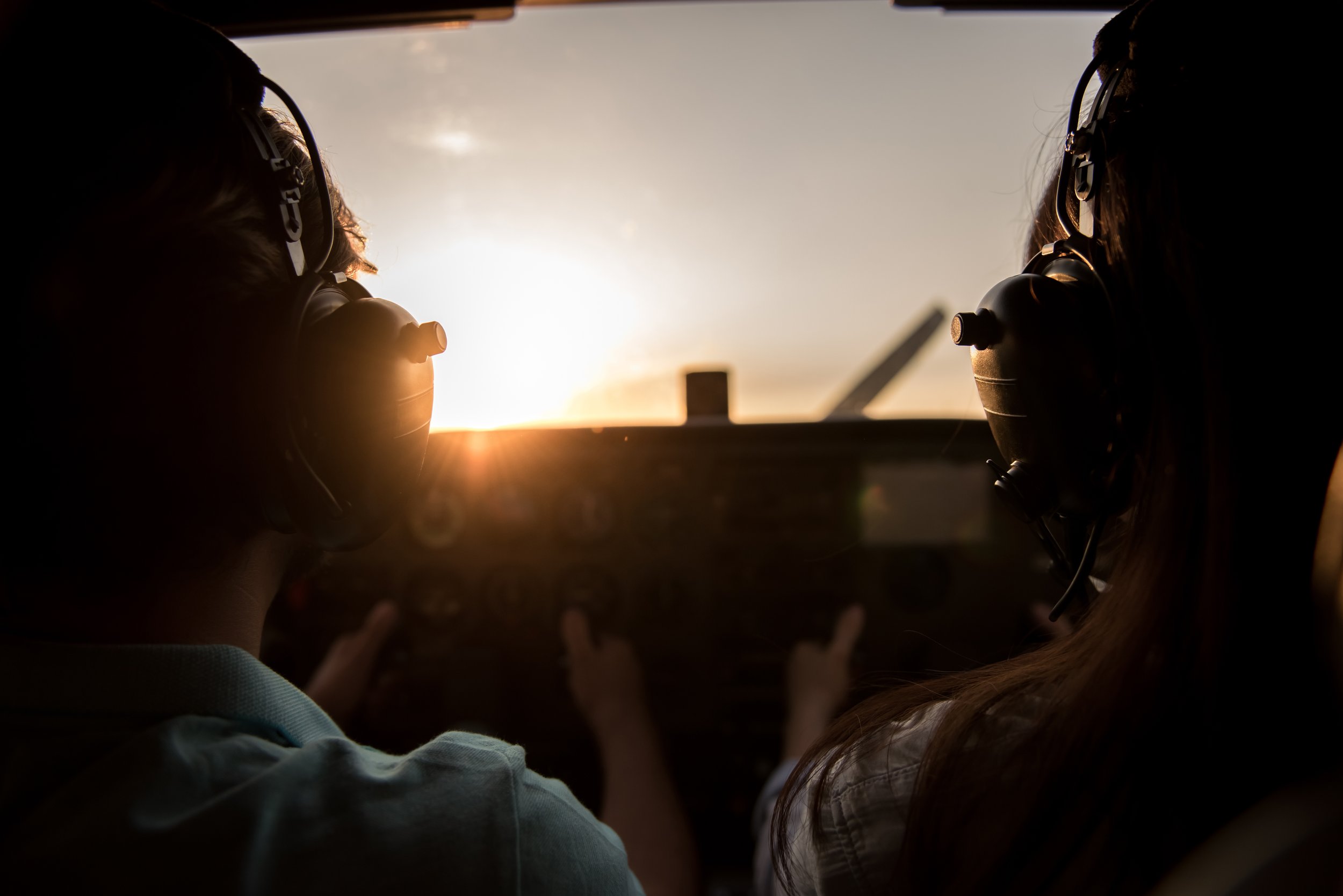How To Bridge the Gap – Commercial Pilot to Airline Pilot
The journey to becoming an airline pilot can be challenging. Airlines typically mandate a minimum of 1500 flight hours before considering candidates. However, to complete your commercial pilot training, you are only required to have 190-250 flight hours. So how do you bridge the gap?
The good news is that once you obtain your commercial pilot license, you are legally permitted to engage in paid flying opportunities. This means you can earn while building your flight hours! However, there are numerous ways you can get those hours, and since you’ll be doing what you love – flying – the hours will add up quickly!
Here are some suggestions for attaining those hours, and in most cases, earning some money along the way.
Become a Certified Flight Instructor
After completing flight training, many people become flight instructors. This is a quick way to build those flight hours while getting paid, and teaching is a great way for instructors to continue their learning or gain some specialty training. We would be remiss not to mention ourselves because Safety in Motion Flight School is a great place to work! Also, we are a professional Part 141 Flight School approved by both the FAA and VA for providing flight training programs and supporting a host of VA GI Bill® educational benefit programs. Our Chief Flight Instructor along with many of the senior flight instructors and mechanics are also military veterans, so we understand the importance of offering this type of training to active, separated, and transitioning military veterans looking for careers as a pilot.
Fly for a Private Charter Company
Once you have your commercial pilot license, you will be able to work for a private charter company. A private charter flight is a flight that is only flying an individual and/or their group. People may book a charter flight to avoid lines at airports, need security, or maybe professionals who want privacy and convenience. As a private charter pilot, you get the privilege to fly the passengers where they need to go safely. (Learn more about our Charter Services.)
Tow Banners
You’ll often see planes towing banners at the beach, sporting events, or festivals. The pilots flying these planes are building flight time while getting paid. Towing jobs typically have lower hour requirements and require navigating densely populated areas (which is great practice for becoming an airline pilot).
Become a Part 135 Pilot
As a Part 135 pilot, you’ll be paid to fly charter, taxi, or cargo to a variety of locations, which is a great opportunity to practice working with dispatch, ground crews, and passengers. Note, most Part 135 jobs require around 500 hours of flight time.
Aerial/Scenic Tours
Another way to time build is by giving aerial tours which may include a tour over a city, landmark, etc. Passengers may book a tour to see or photograph a new location, celebrate a special event, or capture image data for their business. (Learn more about our Scenic Tour Services.)
Fly Skydivers
Skydiving is a popular sport, and like towing, skydivers require your attention to be split between the plane and the divers. This is a great way to build up those hours and skills.
Volunteer for a Charitable Cause
There are many causes, such as disaster relief, non-emergency medical transport, or animal transport, that need pilots. You can also donate your time to auctions or charitable events for aerial tours.
Get a Job at your Local Airport
Working at an airport can lead to some great networking opportunities, like finding instrument students who need a safety pilot, finding an airplane to purchase, or getting a job as a CFI.
Join a Flight Club
Flight clubs and groups are a great way to meet other pilots and they often offer discounted rates for rentals if you don’t have a plane. Start by joining these groups on social media to learn more about them.
Rent, Share, or Buy a Plane
If you’re not interested in earning money while you build your hours, you might want to consider renting a plane or finding another pilot who would be willing to share a plane with you. Or, if it’s possible, buy your plane, or find someone who will go in on the purchase of a plane with you. A great way to make these connections is by spending time at small airports, working at an airport, or joining a flight club.
Regardless of which one of these options appeals to you, we can help! At Safety In Motion Flight Center, we are all about helping pilots succeed. Want to learn more? Contact Us today! And start bridging that gap!

